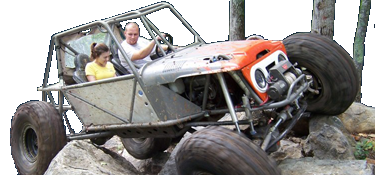Part 2
I ordered this cooler from Summit
http://store.summitracing.com/partd...3818&N=700+4294924500+400226+115&autoview=sku
I have a yj box drilled and tapped for 3/8" NPT
I have the inner frame plated.
I have this Tie Rod Bracket.
http://www.ballisticfabrication.com/OD-Tube-Clamp_p_21-1474.html
I did the West Texas Pump Mod.
http://westtexasoffroad.homestead.com/powersteering.html
I have this cylinder.
http://www.surpluscenter.com/item.asp?UID=2007040810283306&item=9-4410-08&catname=hydraulic
SPECIFICATIONS
Double Acting
Bore/Stroke 1 1/2" x 8"
2,000 PSI max
Rod dia 3/4"
Ports 3/8" NPT
Retracted Length 13 1/2"
Shpg. 10 lbs.
END MOUNTINGS
Rod End Crosstube
Pin hole 3/4"
1-1/4" cross-tube width
Base End Crosstube
Pin hole 3/4"
2" cross-tube width
I will also need to do an internal stop on the cylinder for 7 1/8" travel. Some say this isn’t necessary due to the box having an internal relief when it hits the internal stops. However I have my knuckle stops hitting before the box reaches the internal stops, so if I kept turning with the assist I’d push my knuckles right off the inner-c’s eventually as the ball joints can only take so much. So I took the cylinder apart and added this metal sleeve.
Before
After
Also why we are on the cylinder as this axle is very tight I needed to rotate the fixed end 90 deg so I could have the hoses coming out of the top of the cylinder. I had to cut it off and re-weld it on.
Started like this.
90 deg rotated
Lastly on the cylinder I didn’t want to use a ¾” bolt so I sleeved the ends with bronze down to ½”
Here is a pic of the frame plating ¼”.
New box bolted in.
Axle brackets welded on.
Cooler installed. I put it on the passenger side as it is the side with the mechanical fan and will be pulling air constantly.
The cooler is plumbed off the return line from the box to the top fitting on the cooler. The lower fitting goes to the reservoir on the pump.
I went to the local Parker store for the hose and ends. I may have gone a little overkill on these, but the hose is 4700lb hose reinforced with 3 layers of wire mesh. I had to cut it with a chop saw. I also used reusable ends. As a result if I have a broken line on the trail I can take out my spare line and put the ends on and call it good.
I prefilled everything I could with fluid. This would make bleeding much easier. As for fluid I have heard many things work well, but all agree that Amsoil Synthetic Power Steering Fluid works the best. Some problems are that most people go through growing pains when they first install the hydro assist and have to replace the fluid a couple times and that you can’t get it on the trail or at a part store. Well I bit the bullet and bought a case of it. This way I’ll carry my own and have enough to redo it a couple of times.
Bleeding procedure taken from here.
http://www.pirate4x4.com/tech/billavista/PR-Hydro_Steering/index3.html
Once you have everything installed and plumbed, it's time to fill and bleed. The procedure I discovered works well is:
1. Fill reservoir to just over tip of column
2. Raise front tires off ground to remove resistance
3. Turn steering wheel lock-to-lock while constantly checking the reservoir for air bubbles and level drop. Top us as necessary - be careful not to over-fill. When no more air appears to bubble out and the level remains constant, go to step 4
4. Check fluid level in reservoir, disconnect coil wire, and crank engine over to operate pump and flow fluid through entire circuit. Crank in short bursts. When no more air appears to bubble out and the level remains constant, go to step 5
5. Re-connect coil wire.
6. Check fluid level in reservoir and start engine. Operate at low rpm's at first, do not turn steering wheel. After a few seconds shut down engine and check reservoir. It will likely look like the pic at left, frothy and full of air bubbles. Allow bubbles to dissipate (can take upwards of an hour) and repeat this step until frothing does not occur.
7. Check fluid level in reservoir and start engine. Operate steering lock-to-lock while constantly checking the reservoir for air bubbles and level drop. Top us as necessary - be careful not to over-fill. When no more air appears to bubble out and the level remains constant, go to step 8
8. Top up reservoir, install reservoir cap, lower front tires to ground.
Here you can see everything installed. You can see how tight the clearances are.
Turned right
Turned left
Front shots
It has worked great for a couple of years. My pump has recently taken a dump so I'm just going to get another stock pump and swap in my valve.

